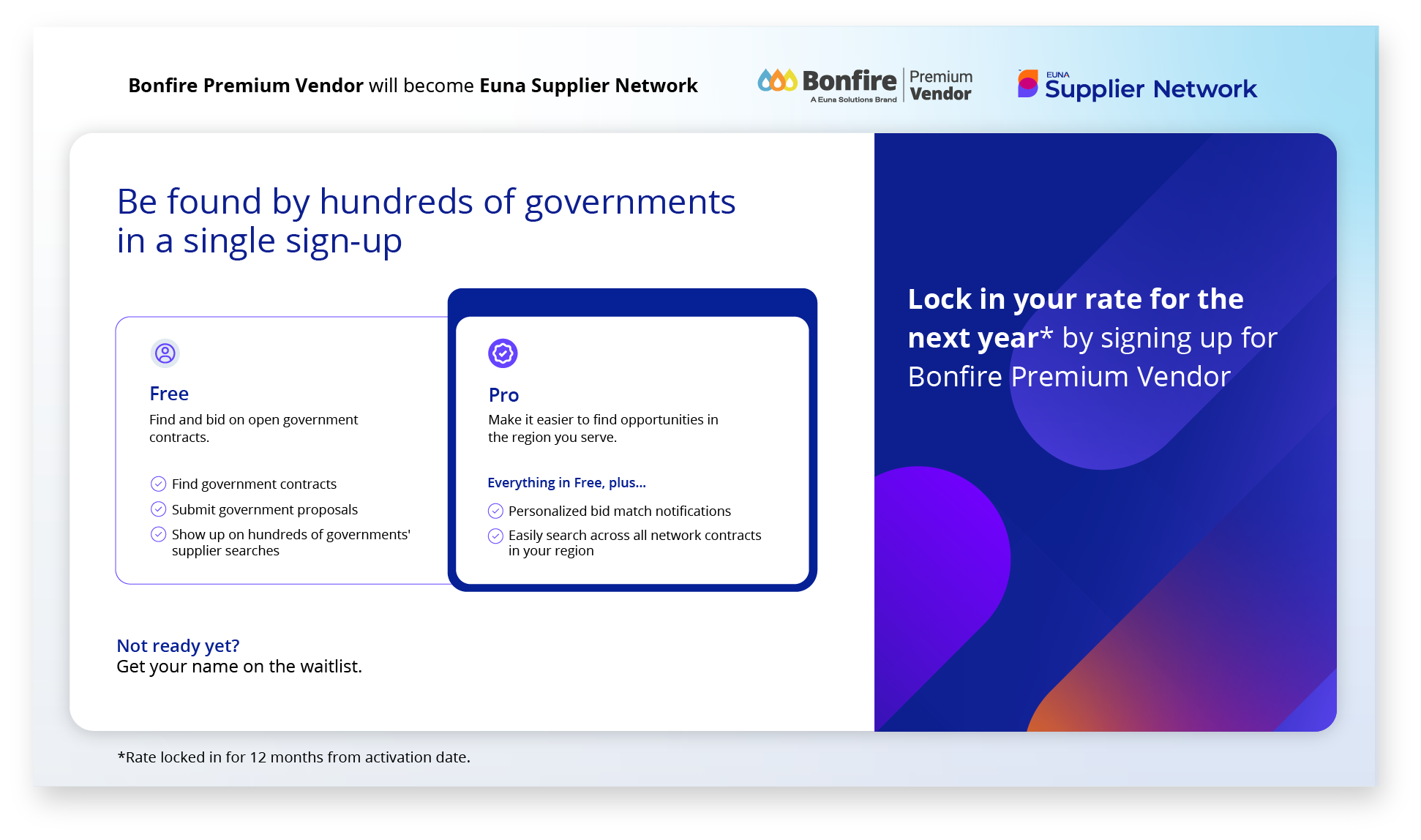Subcontracting within the public sector serves as a pivotal gateway for small businesses aiming to break into government contracting. It involves larger contractors, known as prime contractors, awarding portions of their contracts to smaller businesses. This collaborative approach not only helps prime contractors meet their obligations but also lets smaller vendors gain a foothold in the public sector.
Understanding the intricacies of subcontracting is essential for any small business looking to expand its reach and capabilities in the world of government contracts. In this blog, we’ll explore the benefits, challenges, and practical strategies to be successful.
The Benefits of Subcontracting for Small Businesses
Subcontracting has numerous advantages for small businesses trying to break into the private sector. Here are some key benefits:
- Easier Access to the Market: Trying to go it alone can be tough. Subcontracting allows small businesses to enter the public sector market without the burden of securing large contracts independently.
- Expertise and Resources: Partnering with more established prime contractors provides small businesses access to advanced resources, technologies, and expert guidance they can use going forward.
- Financial Stability: Government contracts often provide a steady stream of work, contributing to the financial stability of small businesses as they continue to build upon their foundation.
- Enhanced Credibility: Successfully fulfilling subcontracting roles on government projects enhances a small business’s credibility and portfolio, bolstering their reputation and making it easier to secure future contracts.
Challenges of Subcontracting in the Public Sector
While subcontracting offers many benefits, it also comes with its set of challenges. Let’s explore a few of them below:
- Complex Regulations: Navigating the maze of government regulations and compliance requirements can be daunting.
- Intense Competition: The competitive nature of subcontracting means that small businesses must consistently demonstrate value and reliability.
- Dependency Risks: Relying heavily on subcontracting opportunities from prime contractors can pose risks if those opportunities diminish.

How to Find Subcontractors
For large prime contractors, identifying and selecting the right subcontractors is a critical step in the subcontracting process, and doing so effectively can mean the difference between project success and failure. Here are some strategic approaches to help you find the right partners:
- Networking and Industry Events: Attend trade shows, conferences, and industry networking events. These venues are excellent for meeting potential subcontractors and fostering relationships within the industry.
- Online Platforms and Directories: Utilize online resources such as government subcontracting directories, the System for Award Management (SAM), and various industry-specific platforms. These tools offer extensive databases of verified small businesses ready to collaborate on government projects.
- Professional Associations: Engage with professional and trade associations. Many of these organizations can recommend reputable businesses within their network, providing a level of assurance about the subcontractor’s expertise and reliability.
- Referrals and Recommendations: Leverage your professional network to seek referrals. The world of subcontractors can be large, so recommendations from trusted colleagues or partners can significantly streamline the vetting process.
By systematically employing these methods, prime contractors can build a robust network of reliable and competent subcontractors, fostering mutually beneficial relationships and ensuring project success.
How to Advertise Yourself as a Subcontractor
Small businesses who want subcontracting work need to show what they’re capable of and stand out to prime contractors. Here are some crucial strategies to ensure you get noticed:
- Develop a Strong Online Presence: Create a professional website that showcases your business’s expertise, past projects, and client testimonials. Maintain active profiles on key industry platforms such as LinkedIn and government contracting sites like SAM.gov.
- Highlight Your Unique Value Proposition: There’s a lot of competition out there, so clearly articulate what sets your business apart. Whether it’s specialized expertise, innovative solutions, or a track record of reliability, ensure this unique value proposition is evident in all your marketing materials and communications.
- Leverage Certification Programs: Minority or women owned small businesses can obtain relevant certifications such as Small Business Administration (SBA) certification, Women-Owned Small Business (WOSB), and Minority Business Enterprise (MBE) certifications. These can help you stand out and significantly increase your attractiveness to prime contractors looking to fulfill specific diversity requirements or participate in a small business subcontracting program.
- Network Proactively: Attend industry conferences, trade shows, and networking events where prime contractors are likely to gather. Engage in meaningful conversations, exchange business cards, and follow up promptly with personalized messages that reinforce your capabilities and interest in subcontracting opportunities.
- Establish a Track Record of Success and Compliance: Build a robust portfolio of previous projects, especially those that align with the type of work you aim to secure. Positive client testimonials and case studies demonstrating your ability to deliver on time and within budget add substantial credibility. In addition, highlight any quality assurance programs, safety records, and financial stability to reassure prime contractors of your reliability.
- Participate in Mentor-Protégé Programs: Mentor-protege programs pair small businesses with more experienced prime contractors for guidance and mentoring. Participation in such programs can enhance your industry knowledge, skills, and potentially lead to subcontracting opportunities.
By leveraging these approaches, you can significantly enhance your visibility and appeal as a subcontractor, paving the way for successful partnerships and long-term growth in the public sector.

How to Successfully Subcontract in the Public Sector
Achieving success in public sector subcontracting requires strategic planning and execution. Here are practical tips to navigate this complex landscape:
Finding the Right Partner
- Research Thoroughly: Investigate potential prime contractors’ past performance, financial health, and reputation in the industry.
- Network Actively: Attend industry events, government procurement fairs, and networking sessions to build relationships with prime contractors.
- Leverage Technology: Utilize platforms like SAM.gov and other procurement databases to identify subcontracting opportunities.
Understanding Contract Terms
- Read Contracts Carefully: Ensure that you thoroughly understand all terms, conditions, and compliance requirements.
- Seek Legal Advice: Consult with an attorney experienced in government contracts to review and negotiate contract terms.
- Clarify Expectations: Define clear roles, responsibilities, and deliverables with your prime contractor to avoid misunderstandings.
Maintaining Compliance
- Stay Informed: Keep up-to-date with the latest government regulations and compliance standards.
- Develop Internal Policies: Implement robust internal policies to ensure ongoing compliance with government requirements.
- Regular Audits: Conduct regular audits to identify and address any compliance issues promptly.
Subcontracting Restrictions
Navigating subcontracting restrictions is essential to ensure compliance and maintain successful partnerships with prime contractors. Here are some key areas to be mindful of:
- Federal Acquisition Regulations (FAR): Familiarize yourself with FAR clauses, specifically those pertaining to subcontracting. These regulations dictate the requirements and limitations on subcontracting, including caps on subcontracting percentages and the necessity for small business participation.
- Set-Aside Contracts: Be aware that set-aside contracts come with specific restrictions. For example, on a small business set-aside, prime contractors must perform a certain percentage of the work themselves, limiting the amount that can be subcontracted.
- Socio-Economic Goals: Prime contractors often have goals regarding subcontracting with disadvantaged businesses, such as Women-Owned, Minority-Owned, or Veteran-Owned Small Businesses. Ensure you understand and can align with these objectives, which may impact subcontracting decisions.
- Joint Ventures and Teaming Arrangements: Understand the rules surrounding joint ventures and teaming arrangements. While these can open up opportunities, they also come with complex restrictions and compliance requirements.
- Flow-Down Clauses: Contracts often include flow-down clauses, requiring subcontractors to adhere to the same obligations that prime contractors have with the government. Compliance with these clauses is critical for maintaining contract validity.
- Certified Cost and Pricing Data: On certain contracts, providing certified cost and pricing data may be required, particularly when subcontracting exceeds specific thresholds. Maintaining transparency and accuracy in financial reporting is crucial.
- Labor Compliance: Ensure adherence to labor laws and regulations, such as the Davis-Bacon Act or the Service Contract Act, which may impose specific wage and benefit requirements for subcontractor employees.
Understanding and managing subcontracting restrictions is vital for maintaining compliance and achieving long-term success in public sector projects. Always consult with legal and compliance experts to navigate these regulations effectively.

The Final Word
Subcontracting in the public sector offers a wealth of opportunities for small businesses seeking to expand their reach, enhance their capabilities, and achieve financial stability. While challenges exist, strategic planning, networking, and a thorough understanding of regulations and contract terms can pave the way for success.
If your business is ready to explore the vast potential of public sector subcontracting, now is the time to take action. Equip yourself with the knowledge, tools, and partnerships needed to navigate this complex yet rewarding landscape.
And when you’re ready to look for public sector contracts on your own, Bonfire Premium Vendor will save you time and effort so you can bid more and search less.



